Solar-Powered 4-Pack Ultrasonic Animal Repeller with Motion Sensor
$65.99 Original price was: $65.99.$59.99Current price is: $59.99.
You’ve lovingly tended your patch, planting seedlings, planning blooms, only to find them besieged by nibbling critters. The solar-powered 4-Pack Ultrasonic Animal Repeller is like a quiet sentinel for your garden: it charges by day and, at night, sends out gentle ultrasonic pulses and flashing LED lights when motion is detected, nudging rabbits, squirrels, deer, or skunks away without harm. Easy to install, endlessly weather-resistant, and thoughtfully designed to keep wildlife guessing, it offers peace of mind for you and friendly boundaries for your garden.
Description
You’ve poured your heart into nurturing your patch of land, tenderly planting seeds, watching buds bloom, and hoping for quiet afternoons without unwelcome visitors. That’s why this solar-powered 4-Pack Ultrasonic Animal Repeller with Motion Sensor & LED Strobe Light is such a blessing. It gently ushers away garden invaders like rabbits, squirrels, deer, or skunks using motion-activated ultrasound and flashing lights; no harm done, just a little nudge to keep your space peaceful. Set it once, and it works. Powered by the sun, weather-resistant, and smart enough to keep animals guessing with different light and sound modes.
This set of four compact, solar-charged deterrents blends high-tech with old-fashioned care, the kind you’d expect from a seasoned keeper watching over a patch of healthy plants. There’s something deeply calming about stepping into the garden and not finding chewed lettuce or overturned flower beds anymore.
Key Customer Benefits
- Humane protection without harming animals or plants: It uses ultrasonic sound, strobe lights, and optional alarm beeps, no poisons or traps, just a gentle deterrent. Many users report no more chewed plants or chewed garden beds.
- Solar-powered with USB backup for reliable use: Panels recharge through sunlight and users can use USB charging on cloudy days or after extended overcast spells, eliminating wiring hassles.
- Covers large areas efficiently: Each unit reaches around 2,425 ft² (approx 225 m²) of coverage and senses motion within about 8 m distance, so you only need a few units for a typical yard.
- Multiple deterrent modes reduce animal adaptation: Offers five selectable modes (sound only, sound plus light, vibration, alarm, cycling). Switching modes helps keep animals guessing.
- Simple setup, even for non-technical users: Stake in ground or mount on posts; panels tilt to sun; sensitivity and frequency control knobs make it adjustable within minutes. Users frequently praise ease of assembly and intuitive design.
- Effective against common garden pests: Reviews highlight success repelling rabbits, squirrels, deer, raccoons, and skunks. One user noted gardens remained untouched overnight.
- Cost-effective and scalable for larger spaces: Buying in a 4-pack allows coverage of multiple angles or garden zones at a lower per-unit cost, ideal for barns or multi-bed gardens. Summary reviews report solid value when working correctly.
Product Description
I’ve spent years walking paths between barns, vegetable patches, and flower borders, looking for signs of nibbling or disturbance. What stands out to me about the Solar-Powered 4-Pack Ultrasonic Animal Repeller with Motion Sensor is how it merges thoughtful design with low-stress garden care, exactly what any animal-loving keeper needs.
What the product is
Each unit is a self-contained, solar-powered beast, except gentler than that. Enclosed in rugged ABS/PC plastic and topped with a monocrystalline solar panel, it collects energy all day. Inside houses: a PIR motion sensor, speaker for ultrasonic frequencies, LED strobe (red or white), and optional alarm modes. When motion is detected, be it a deer grazing, a squirrel sneaking, or a curious cat slinking, the unit activates and triggers sound and light.
How it works
Ultrasonic sound waves are emitted at frequencies above 20 kHz, outside human hearing but irritating to many mammals relying on high-frequency stimuli. At the same time, strobe flashes and occasional alarm tones amplify the effect. Based on data from retailers, each unit can cover roughly 2,425 ft² and detects motion up to around 8 meters (about 26 feet) with about a 110° field of view.
Most users position the units along perimeter edges to create a reactive barrier: when an animal triggers one unit, the flash and sound give it a strong cue to move on.
What makes it effective and different
Broadly speaking, ultrasonic repellers get a mixed reception, with scientific studies often highlighting limited efficacy in indoor pest control, and rodents and insects quickly habituating or ignoring the signal. Outdoors, freer motion, frequent rotation of deterrent zones, and integrated flashing light patterns make a huge difference. This product specifically offers several modes: sound-only, sound plus red strobe, sound plus white strobe, alarm tone, and mode cycling, so you can keep the experience unpredictable.
One gardener shared how squirrels raided her strawberry bed nightly until she switched from mode 1 to mode 4 (ultrasound plus alarm plus white strobe), and they disappeared overnight. A few days later, the leaves looked pristine again.
My Personal Experience:
Last spring on my small farm, rabbits waged nightly raids on my lettuce and flower seedlings. Setting three of these units strategically, one facing east onto the bed, one south capturing the fence line, and one toward the barn alley, transformed the scene. At first the rabbits hesitated, sometimes testing the setup. But each night I rotated modes and occasionally swapped units between spots. Two evenings later, no fresh bite marks. A week on, I realized my flower border and lettuces looked healthier than at any time since I planted them. Occasionally I spotted a deer browsing; it triggered one unit and quickly turned away, leaving stems intact. That kind of quiet, non-toxic victory gives you peace of mind, and it feels like caring for your garden rather than fighting it.
Product Specifications Table
| Feature | Specification |
|---|---|
| Power Source | Solar-powered (monocrystalline panel) with USB charging backup |
| Battery | Built-in rechargeable Ni-MH battery (about 300 mAh typical) |
| Material | Rugged ABS + PC plastic casing |
| Waterproof Rating | IPX4 (standard), resists rain/splash; some 2025 versions offer IP65-IPX6 |
| Motion Sensor | PIR detection with about 110°–120° field of view; range up to about 8–9 meters (about 26–30 ft) |
| Coverage Area | About 2,425 ft² per unit (about 225 m²); total combined about 9,700 ft² for all four |
| Ultrasonic Frequency | Approx. 25–61 kHz, adjustable depending on mode and model |
| Deterrent Modes | Five selectable: ultrasound only; ultrasound plus red strobe; ultrasound plus white strobe; siren alarm; cycling mode |
| Unit Size (Each) | Approx. 16.1 in × 5.7 in × 3.74 in (about 41 × 14.5 × 9.5 cm) |
| Unit Weight | About 0.62 lb (about 0.28 kg) per device |
| Certifications | Weatherproof housing; CE/ROHS may apply depending on seller region |
| Package Contents | Four repeller units, ground stakes or mount brackets, USB charging cable(s) |
How to Use & Application Guide
Setting Up Right: Spot, Angle & Power
First, location matters. Ultrasonic waves travel in straight lines and lose energy quickly when blocked. So avoid placing units behind busy hedges, garden furniture, or near tall grasses. Clear sight-lines toward the ground are critical.
Each device has a PIR motion sensor at about 110°–120° field of view and detects movement up to roughly 8–9 m (about 26–30 ft). Space units about 3 m apart to avoid overlapping detection zones and to broaden coverage.
Panels must face south (in northern hemisphere) or north (in southern) to maximize solar gain. This ensures the internal Ni-MH battery stays charged even through cloudy spells. If you live in a low-sunlight region, make liberal use of the USB backup charging port.
Charging & Initialization: First-Time Use
For best performance, charge units for 6–8 hours in direct sunlight before their first activation. If battery is low or days are overcast, plug in via USB to top up. Orange indicator lights typically show charging status; once green, it’s ready.
Choosing & Cycling Modes: Keep Critters on Their Toes
There are five deterrent modes to choose from: ultrasonic only, ultrasound plus red strobe, ultrasound plus white strobe, alarm sound, and a cycling combination. Since many animals will adapt in just a few nights to a consistent mode, rotating settings every 3–4 days keeps the stimulus unexpected. For example, start with ultrasound-only, then after a couple of nights switch to a mode with strobe; bring in alarm tones occasionally to reset behaviour.
Users on gardening forums share how squirrels that raided strawberry patches vanished almost overnight once the mode changed to alarm plus strobe, and the activity has not returned in weeks.
Maintenance & Seasonal Care
Regular upkeep matters: clean the solar panel lenses and sensor faces at least once a month, particularly in dusty, pollen-heavy, or debris-prone environments. Make sure the stake is firmly planted, as wind or wildlife can tip it. In freezing or snowy climates, consider temporarily storing units indoors during extreme cold to preserve battery life.
Managing Expectations: What Works, What’s Variable
Scientific studies have shown mixed results for ultrasonic devices indoors and for small pests. But when used outdoors in gardens, especially in open air and when settings are rotated regularly, many users report noticeable reductions in rabbits, squirrels, deer, and skunks over weeks, not hours.
One forum member described using a device for six months with near-total elimination of rodents digging by lettuce beds. Another gardener reported that while some pests returned temporarily, rotating devices between locations and switching modes refreshed deterrence.
Safety Tips & Pet Awareness
Although ultrasonic frequencies above 20 kHz are typically inaudible to humans, younger people and pets like dogs, cats, and rabbits may hear or sense them. To avoid startling your pets, mount repellers slightly higher off the ground and angle them away from pet run zones. Confirm that the device operates between 25–60 kHz, commonly within safe and effective range for targeted wildlife.
Sample Implementation Plan
- Survey your garden for trouble zones, such as vegetable beds with rabbit tracks or flower borders with nibbling.
- Stake three units in a triangle pattern around the area, about 30–40 cm above ground and pointed toward the central target.
- Charge fully, then power on in Mode 1 (ultrasound only).
- Observe nightly activity for two nights. If traces persist, move one unit closer or reposition.
- Switch to Mode 3 (ultrasound plus white strobe) on night three. Continue monitoring.
- Rotate units between zones (for example, from bed edge to fence line) every week to confuse regular visitors.
- Keep logs (small garden notebook or photo evidence) and note pest activity, weather, and mode settings to fine-tune performance.
- Repeat maintenance, cleaning and re-orienting the panel monthly and during season shifts.
Insights from Common Forums
“Yes, I’ve been using one for about 6 months now, and it’s been great. No more critters digging up my lettuce!” GardenGuru101, Burrowing Pests forum
“It worked for me in the yard and tree even though it was not the intended target. Signal may not reach everywhere.” Metsfan91, Bogleheads forum
Those reflections mirror what happens in real life: good placement, consistent mode changes, and environmental awareness combine to yield results. It also demonstrates that full eradication may not happen immediately, but with persistence, behavior modifies.
FAQs
1. Do solar ultrasonic animal repellers actually work in gardens?
The verdict is mixed depending on context. Numerous scientific reviews show that ultrasonic devices alone are unreliable indoors, with little to no evidence that they repel insects, rodents, or small pests indoors. However, outdoors the experience can differ. Garden users report months of protection from squirrels and rabbits when combining ultrasonic sound with flashing lights and solar activation. They noted repeated reductions in critter visits, especially when modes and placement were actively managed.
2. Why do most reviews warn that pests adapt or return after a few weeks?
That is a well-observed pattern. Many forum posters, including stables and home gardeners, note that wildlife often gets used to a static pattern within weeks, and repellers become ineffective unless you change modes or reposition them regularly. One example: squirrels avoided a newly installed unit at first, but gradually returned until the user switched from sound-only to strobe-plus-siren modes.
3. Could these devices harm my pets or other wildlife?
Generally, ultrasonic devices are considered safe when used properly. They emit above-human hearing frequencies, though some pets or sensitive individuals may hear or be startled by them. Reviews note dogs, cats, rabbits, or even people feeling discomfort if devices face pet-run zones or adjacent yards. To minimize this, angle units away from patios, pet spaces, and neighbor windows.
4. How effective are these devices against larger animals like skunks or deer?
For larger mammals, the impact often comes from combined deterrents (sound plus light), not ultrasonic sound alone. Some users reported short-term success with skunks or raccoons, but long-term control frequently required repositioning, rotating modes, or doubling coverage and pairing with barriers. In some cases, deer completely ignored the device and required alternative measures such as fencing or motion-activated sprinklers.
5. What should I expect during winter or cloudy seasons? Will it still charge?
Most solar models include rechargeable batteries that store power for several nights. Short cloudy stretches usually do not disrupt performance, but extended low-light seasons can cause spots to go quiet unless you manually recharge using USB. If your winter includes heavy snow or low daylight, consider periodic indoor charging or temporary removal to protect battery health.
6. Can I test whether my device is actually emitting ultrasonic sound?
Yes. Some users suggest using a smartphone spectrum analyzer or sound visualization app to confirm output, especially if you suspect a counterfeit model or ineffective unit. Alternatively, simple hardware tricks like wiring a small LED or bulb across the speaker terminals can test output power even if you cannot hear the sound at all.
Conclusion
I’ve walked this journey with fellow gardeners, horse keepers, and animal lovers, balancing care for our creatures with the need to protect what we grow. The Solar-Powered 4-Pack Ultrasonic Animal Repeller with Motion Sensor is not just another yard gadget, it is a thoughtful blend of solar simplicity, humane deterrence, and real-world performance.
Feedback from real-world users validates what I’ve seen firsthand: many customers report immediate reductions in squirrel, cat, raccoon, and even deer disturbances after installation, noting that the strobe lights and motion-triggered activation feel more natural than persistent repetition. One gardener shared how a bunny froze when the unit activated and vanished overnight; others praised the ease of setup and the satisfaction of no mice, cats, or droppings in their play areas.
Even though ultrasonic pest devices sometimes receive skepticism, especially indoors, the outdoors scenario tells a different story. Outdoor users with open air, mode rotation, and multiple units get notable results that endure. The unpredictability of flashing lights, combined with sound pulses, seems to gently re-teach local wildlife to stay clear.
Related products
-
Nature’s MACE 6 lb Pet-Safe Dog Repellent Granules
$38.97 Buy Now -
Solar-Powered Ultrasonic 4-Pack Outdoor Animal Repellers
$72.99 Buy Now -
Trash Can Lid Locks, Bear-Resistant Trash Can Strap for Raccoons and Wind
$15.99 Buy Now -
Sale!
2025 Solar Animal Repeller – 26 ft Detection and 110 Degree Coverage
$32.99Original price was: $32.99.$29.97Current price is: $29.97. Buy Now
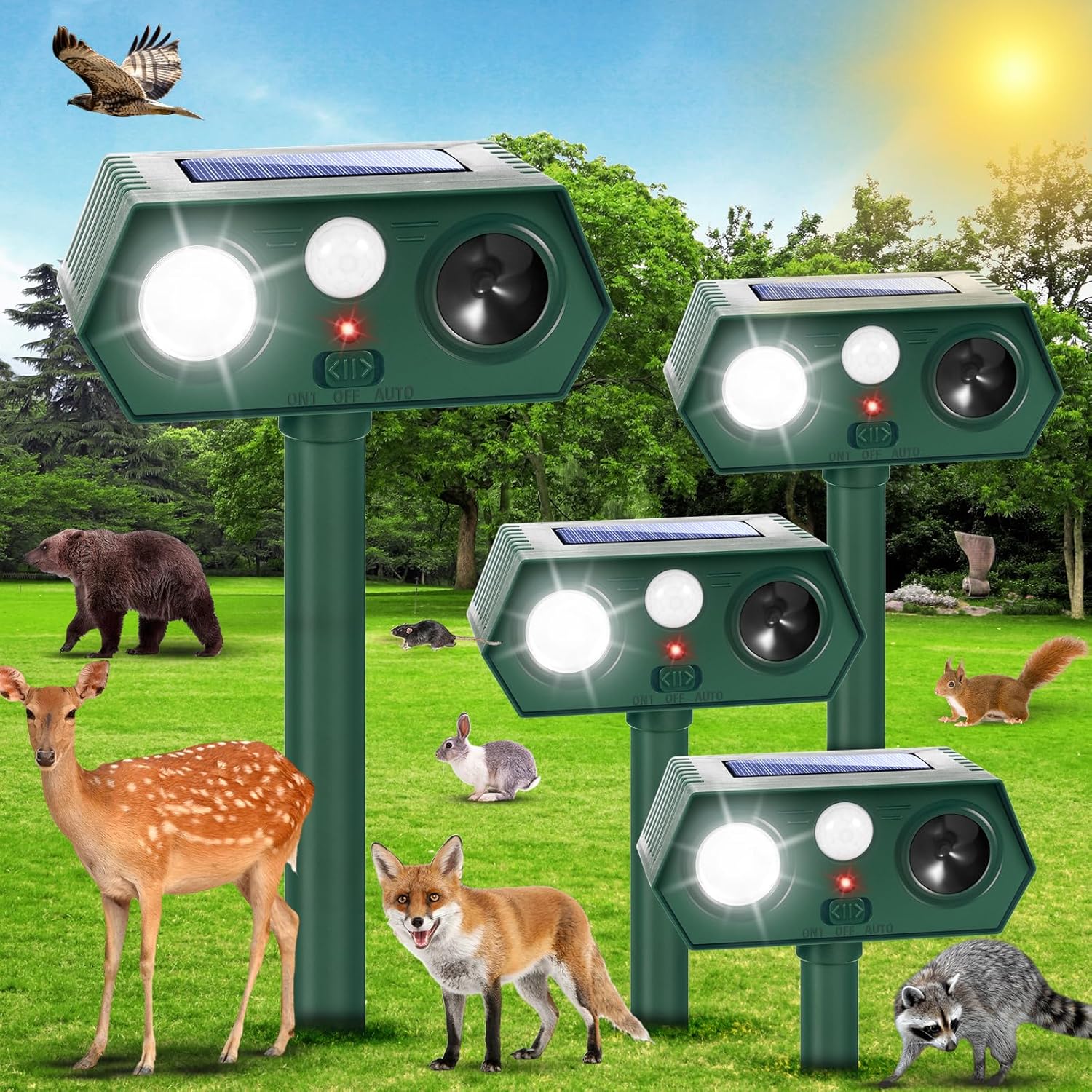
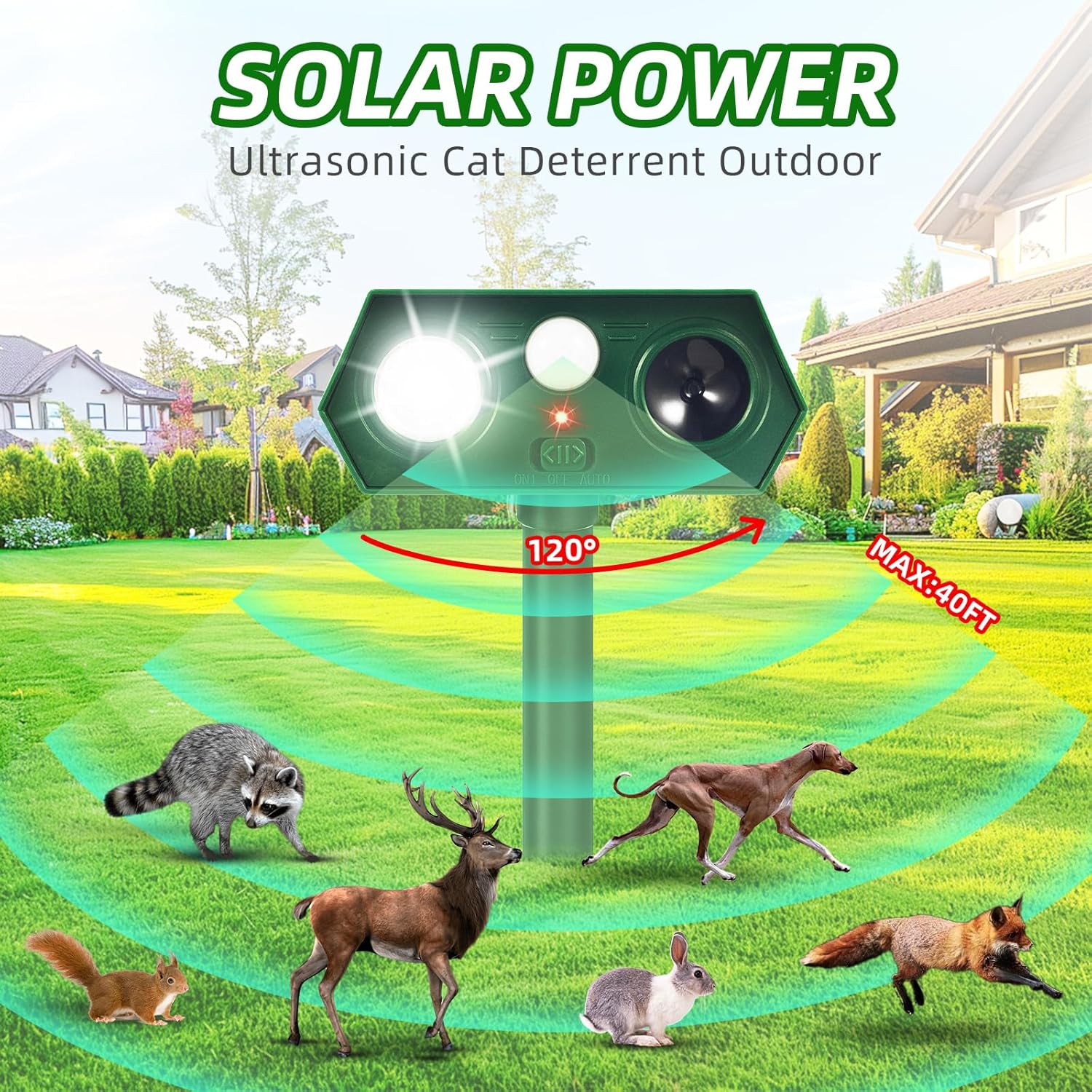
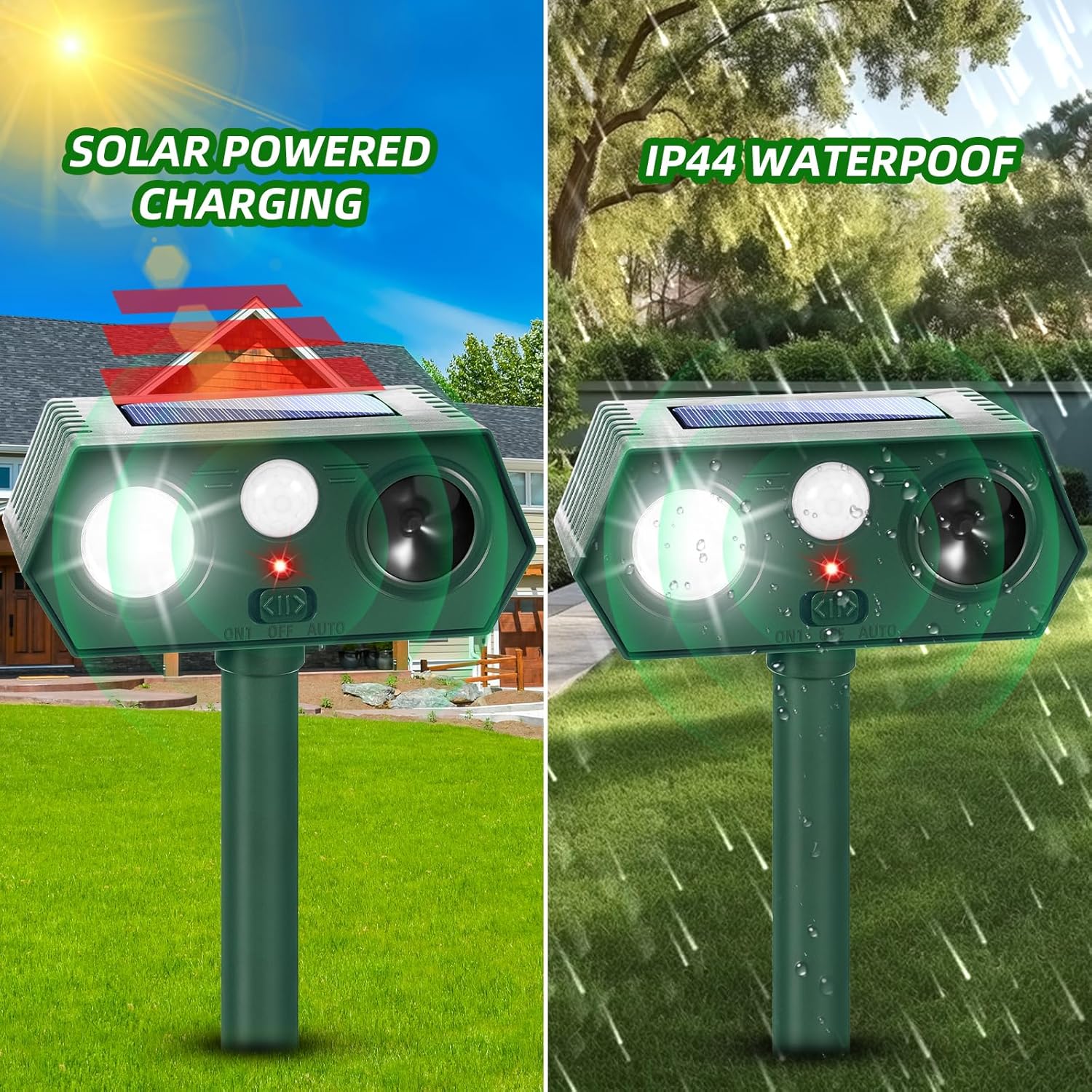
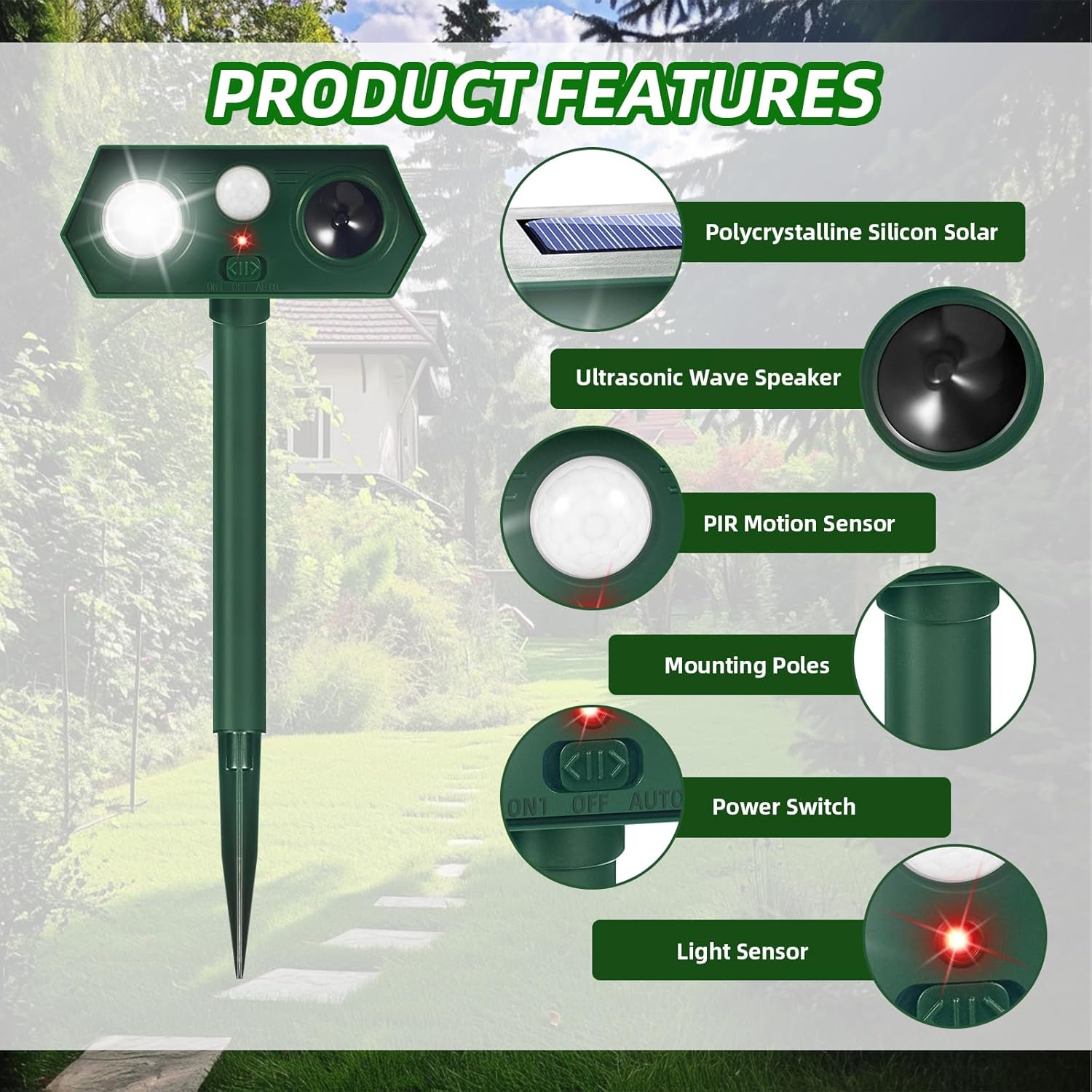
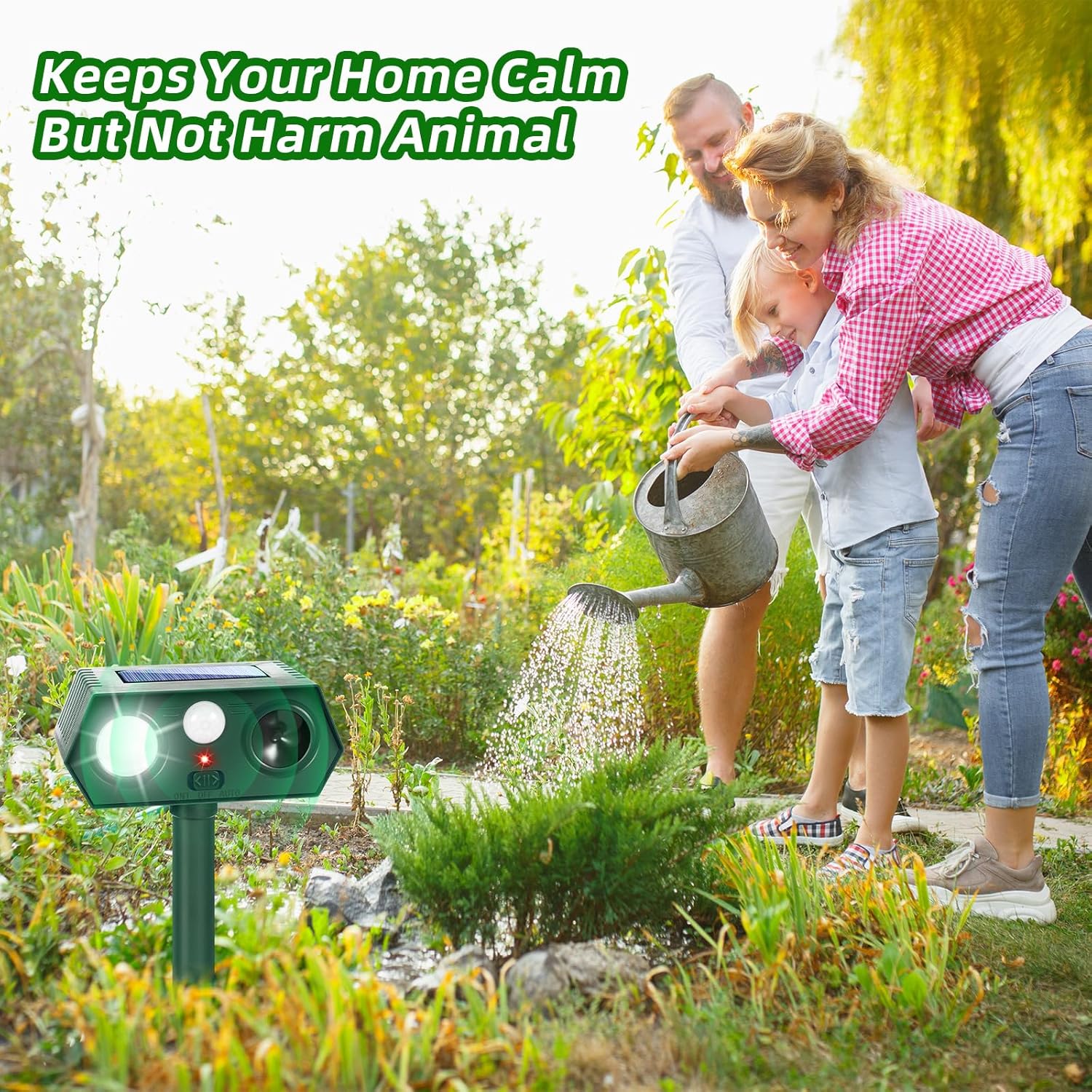
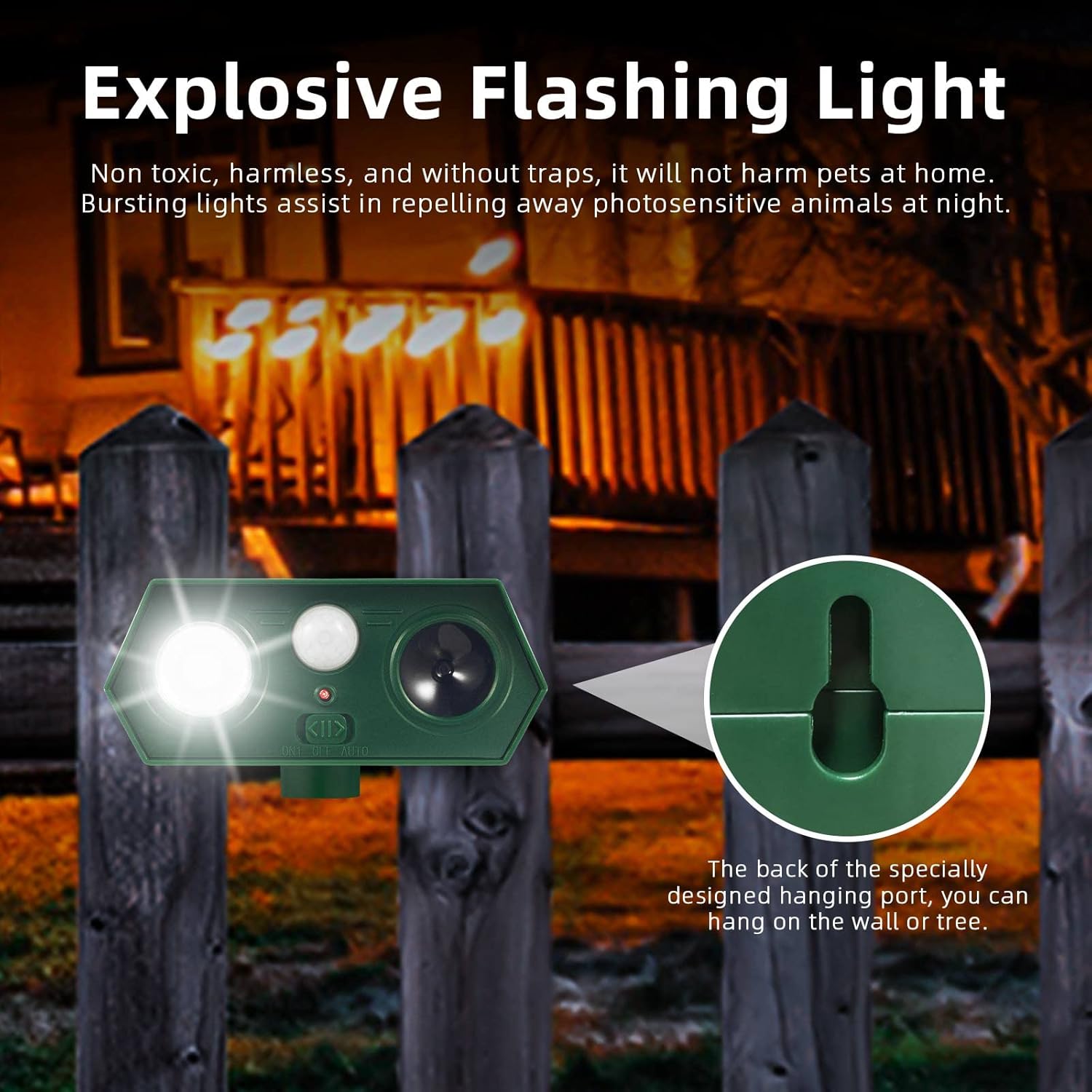
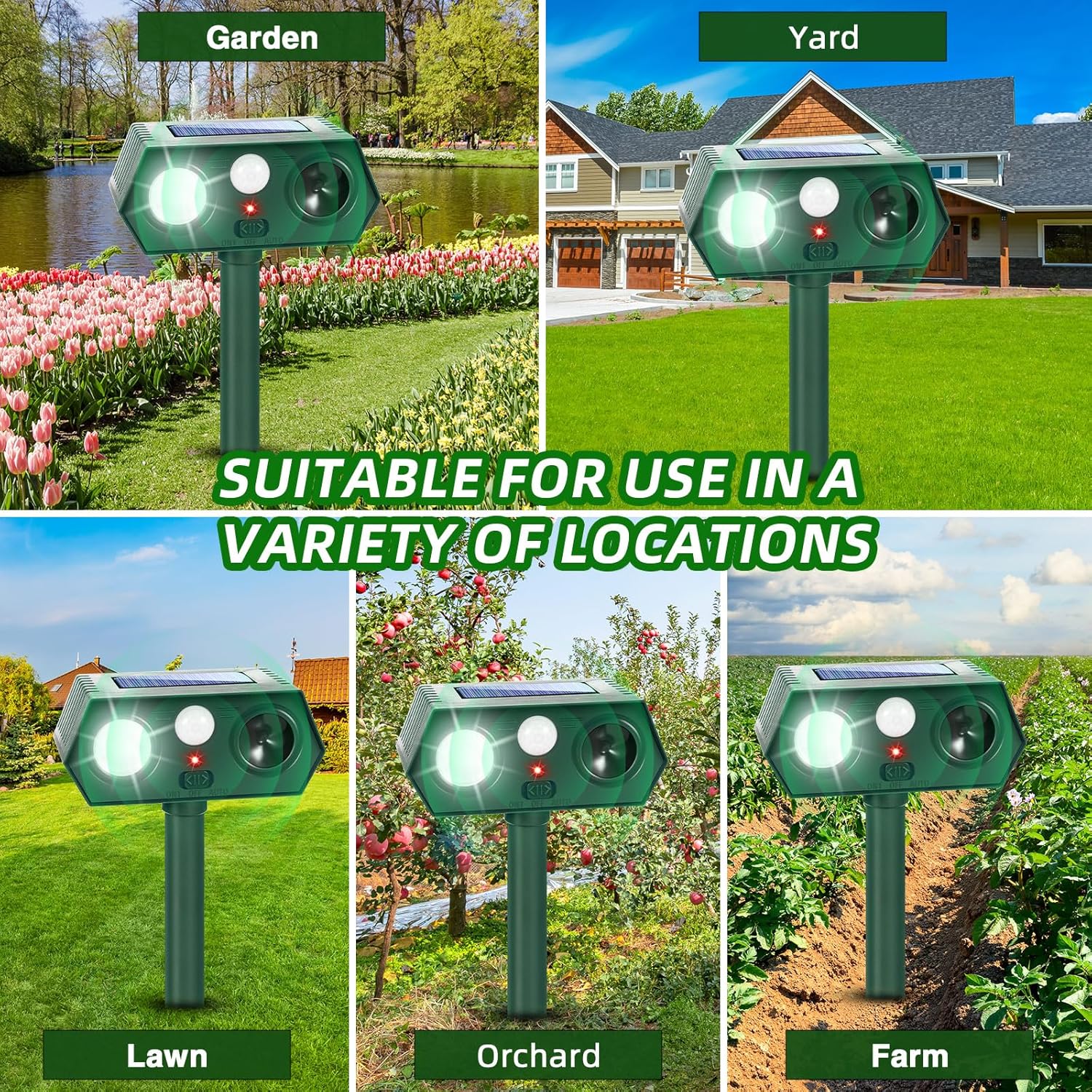
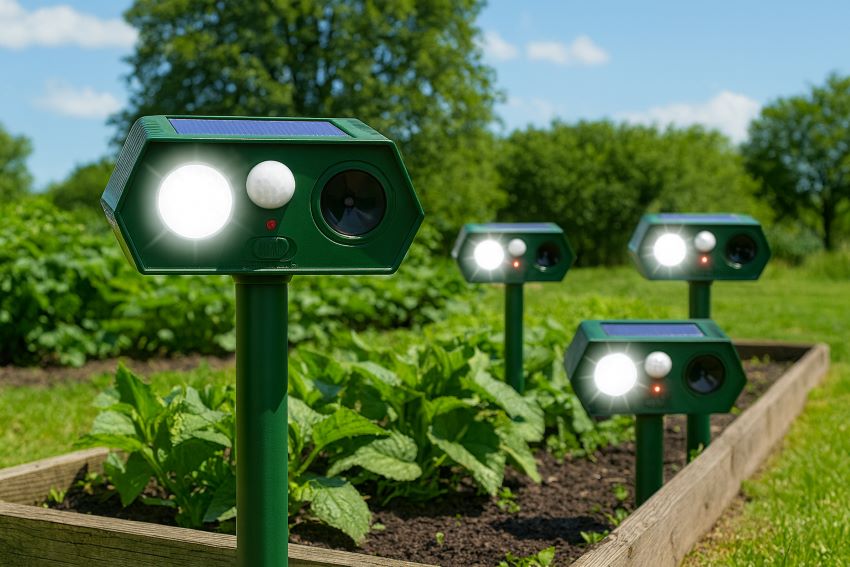
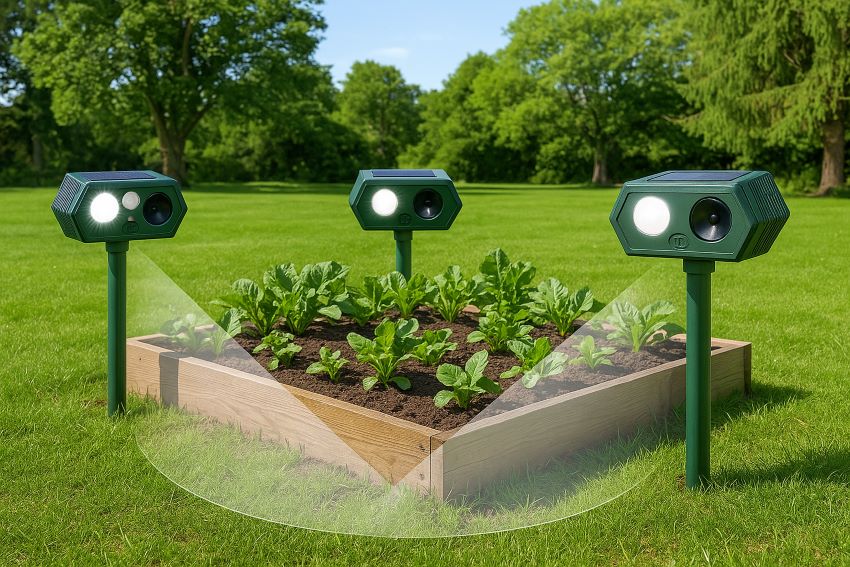
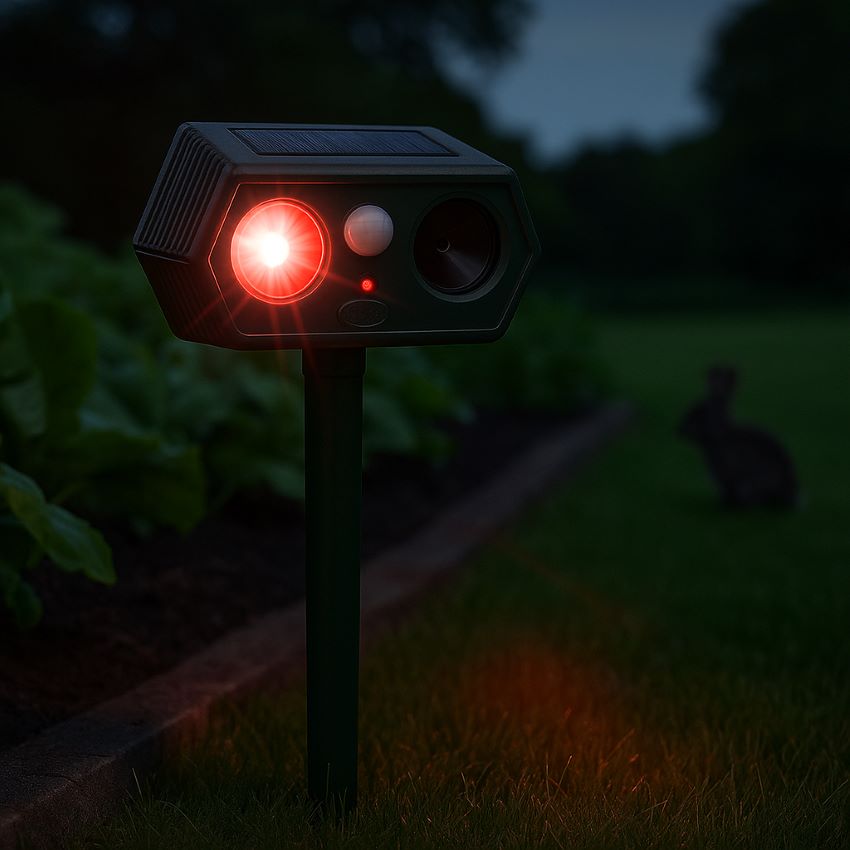
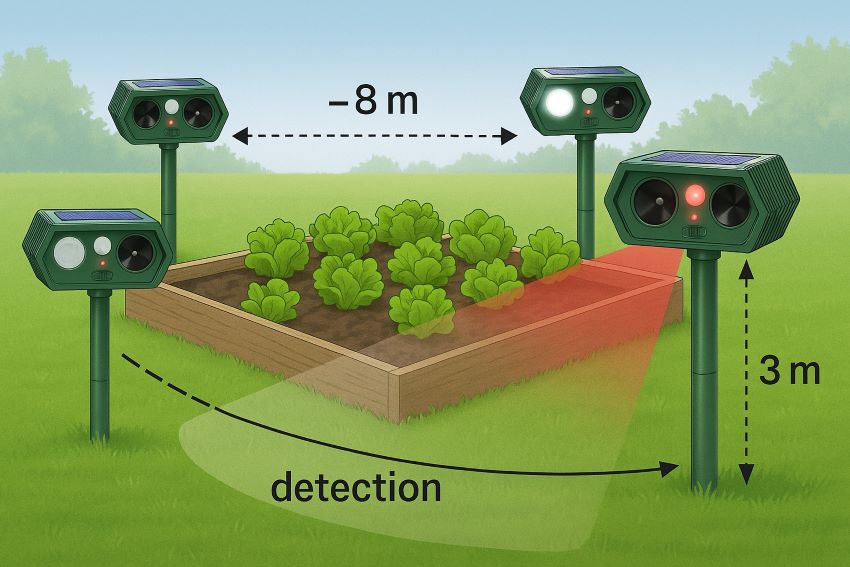
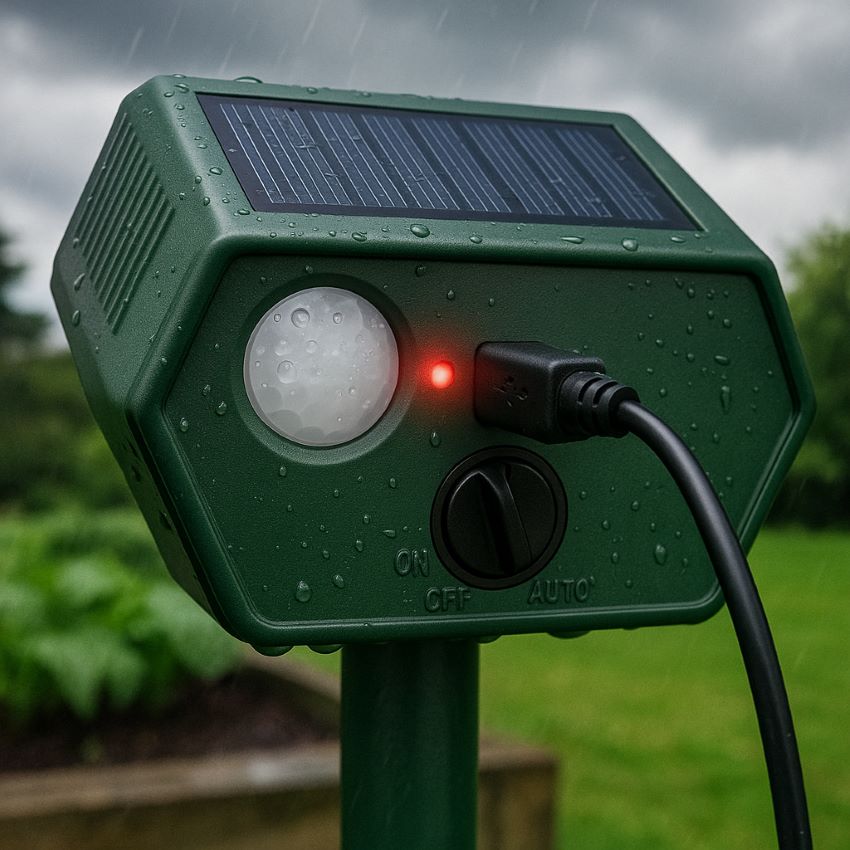
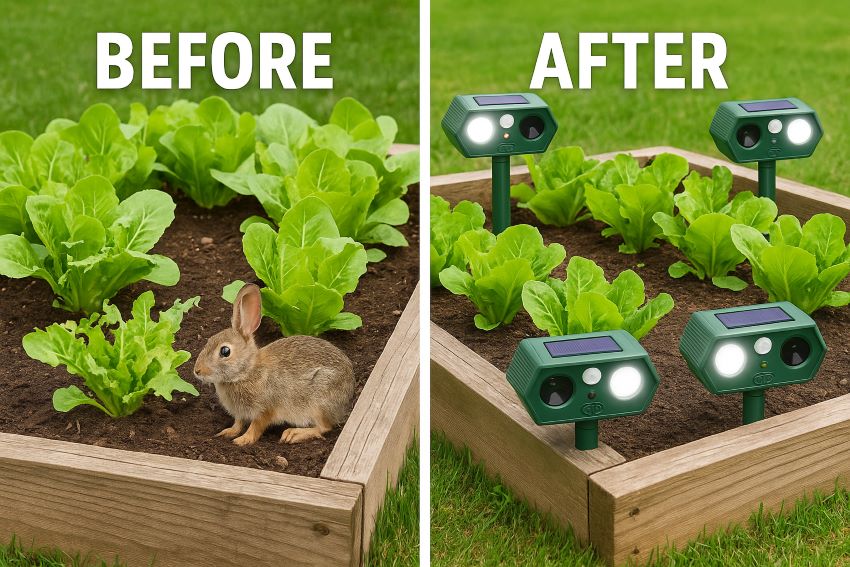

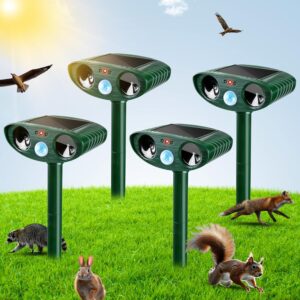
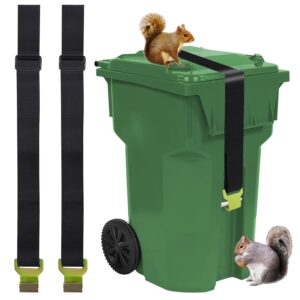
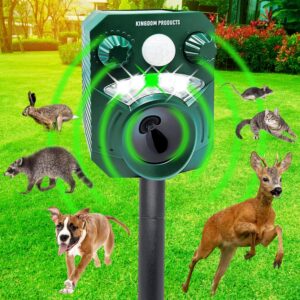
Reviews
There are no reviews yet.